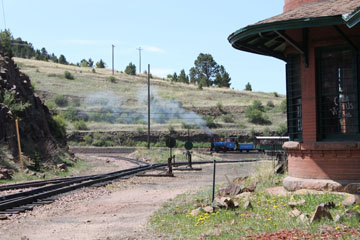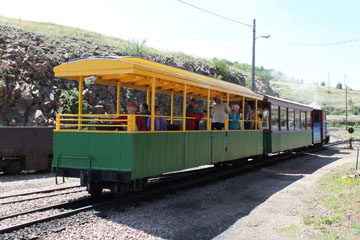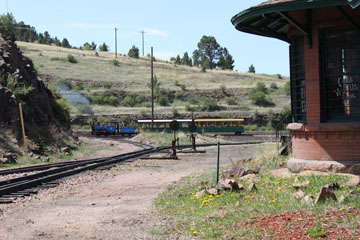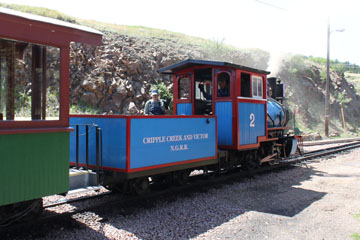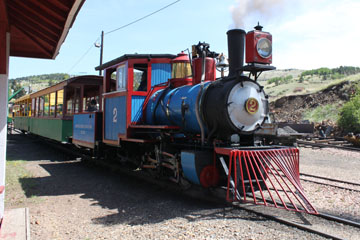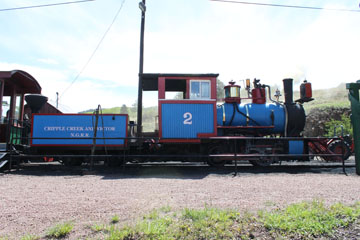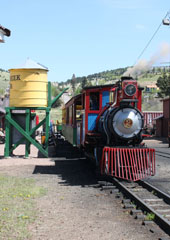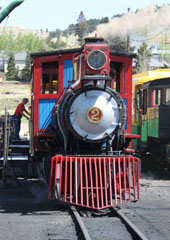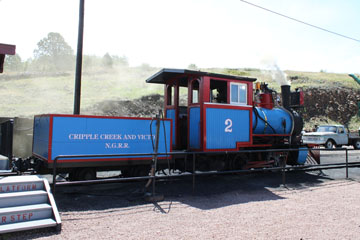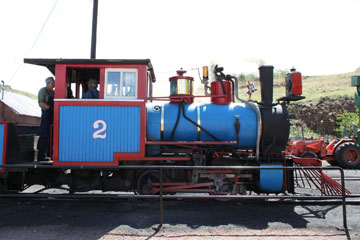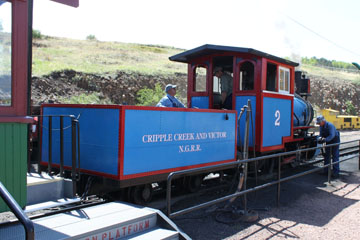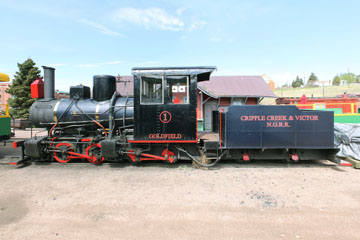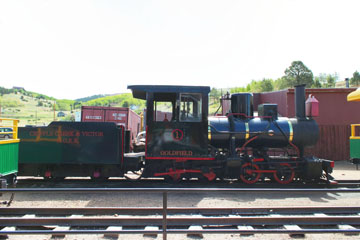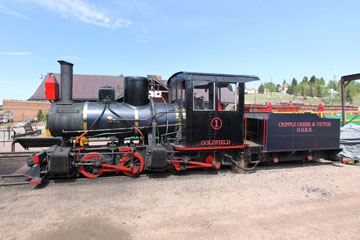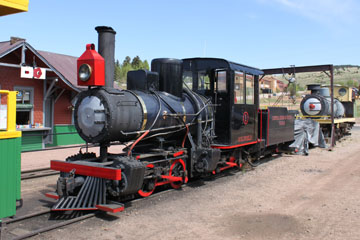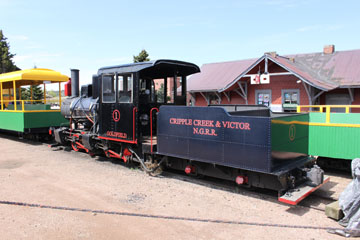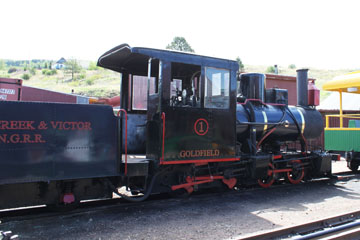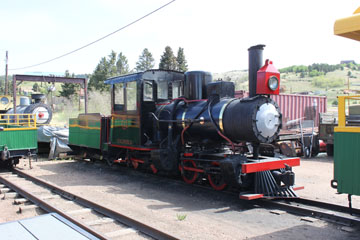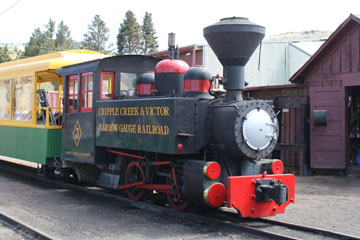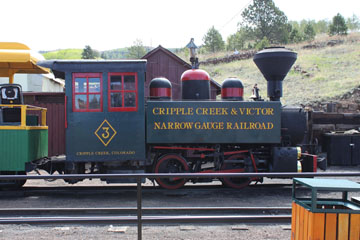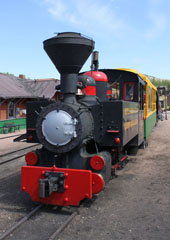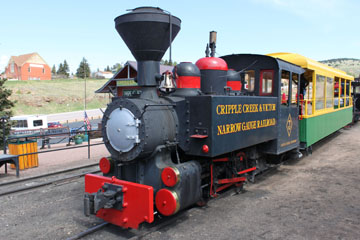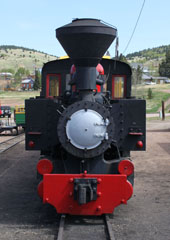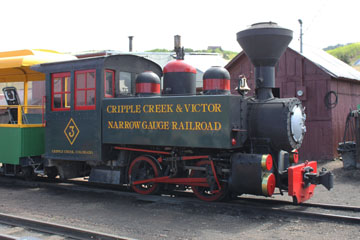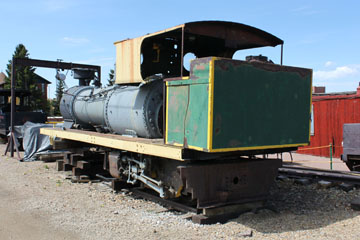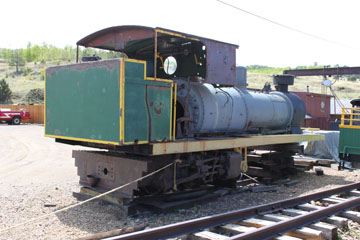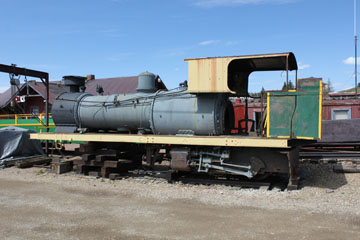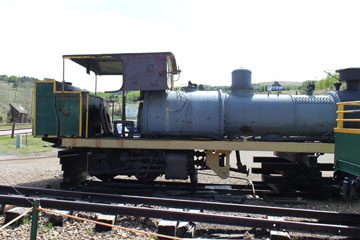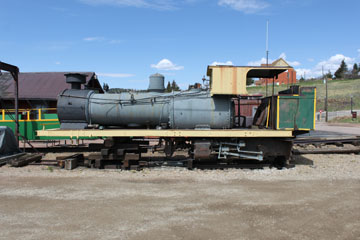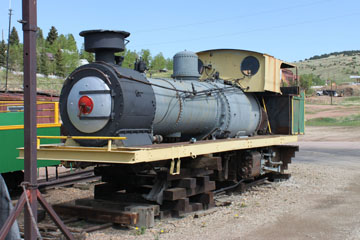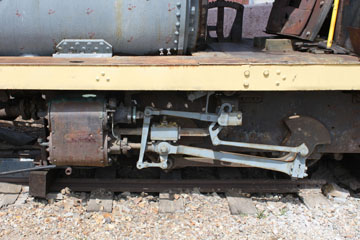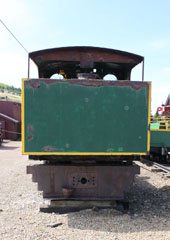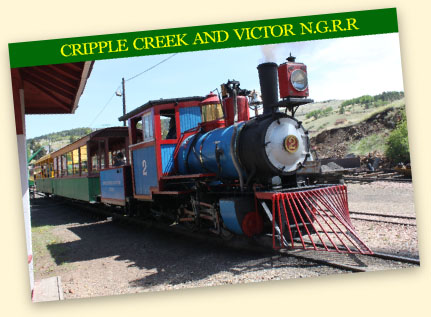

The Cripple Creek & Victor Narrow Gauge Railroad is a 24” narrow gauge tourist railroad operated by the Birmingham family. In 1965, John Birmingham bought two locomotives from the Climax Molybdenum mine of Colorado, which formed the nucleus of the operation.
The railroad now has three coal fired locomotives, as well as a GE diesel-electric switcher variously built in the US, Germany and the United Kingdom. Trains depart every 45 minutes between 10.00 am and 5.00 pm, May to September, from Bennett Avenue/5th Street travelling south to the abandoned Anaconda mining camp and return, a trip of about four miles on a revitalised section of the original Midland Terminal Railway and the Florence & Cripple Creek Railroad.
The railroad started operations on 28th June 1967 and its one station and around half of its route is located within the Cripple Creek Historic District, a National Historic Landmark. The gift shop and ticket office building was constructed as the depot at Anaconda, CO, in 1894 and was moved to Bull Hill after a fire in 1904 destroyed most of Anaconda. It was moved to its present location in 1968.

Henschel & Son was a German company, located in Kassel, and was founded by Georg Christian Carl Henschel in 1810. In 1848, the company began manufacturing locomotives, becoming the largest locomotive manufacturer in Germany by the twentieth century.
During WWII, Henschel became a major armaments manufacturer for the Third Reich and its factories were nearly completely destroyed by Allied bombing. Manufacturing began again in 1948 and the company was eventually acquired by Bombardier around 2002.
Above, Hanseatische Kieswerke #2 moves its train of carriages onto the wye at the south end of the yard before reversing into the depot.
The locomotive was built by Henschel & Son in 1948. It is a coal burning 0-4-0T (Tank) locomotive weighing 24,400 lbs. With 9½” x 11¾” cylinders and 24” drivers, it operated at a boiler pressure of 150 psi delivering 5,7500 lbs tractive effort. In 1967, it was sold to Arthur Seifert in Hilliard, FL, and then to Joe Pettingill in Estes Park, CO. It was bought by the Cripple Creek & Victor Narrow Gauge Railroad in 1970.

Orenstein & Koppel specialised in railway vehicles, escalators and heavy equipment. The company was founded in 1876 in Berlin by Benno Orenstein and Arthur Koppel.
Known as the Märkische Lokomotivfabrik, from 1892 the O&K factories in Schlachtensee supplied the Imperial German Army with field-service locomotives. With the collapse of Imperial Germany in November 1918, the victorious Allies placed restrictions on German manufacturing and military capacity, seizing all army locomotives and removing access to export markets.
This 0-4-4-0 compound Mallet was built in 1902 by Orenstein & Koppel in Germany for Guillermo Purcell in La Terminal, Mexico. It stayed with the company through various mergers and consolidations until 1964, when it was sold to John Birmingham in Boulder, CO, then becoming Cripple Creek & Victor #1.
With 24” drivers, it weighs 37,400 lbs and has
8” x 10” high pressure cylinders and 8” x 10½” low pressure. A coal burner operating at a boiler pressure of 150 psi it delivered 6,000 lbs tractive effort.
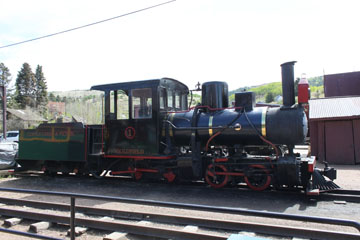
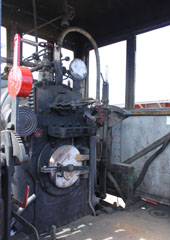
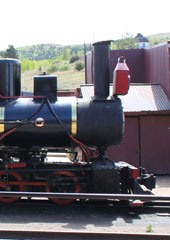
At the end of 1925, work stopped at the O&K factory for three months as a result of the lost business although things improved up until and and during WWII.
After the war, the company operations were nationalised in East Germany although it
continued in West Germany under the name Orenstein & Koppel AG, with headquarters in Berlin. During the 1960s, the railway business was transferred to the Canadian company Bombardier, and continues to manufacture rolling stock in Berlin.

#4 is one of only two surviving Bagnall
locomotives in the US, both of which were built
for Tongaat Hulett Sugar in Natal, South Africa
and neither of which actually operated for a US railroad.
Named "Nonoti", #4 later became Darnell Sugar Estates "Mbozana" and then, in 1968, Reynolds Brothers Sugar Co., #13 in Sezala, South Africa. This 0-4-4-0 engine has 24” drivers and 9¼ x 14” cylinders. A coal burner operating at a boiler pressure of 165 psi, it delivered 13,975 lbs tractive effort.


